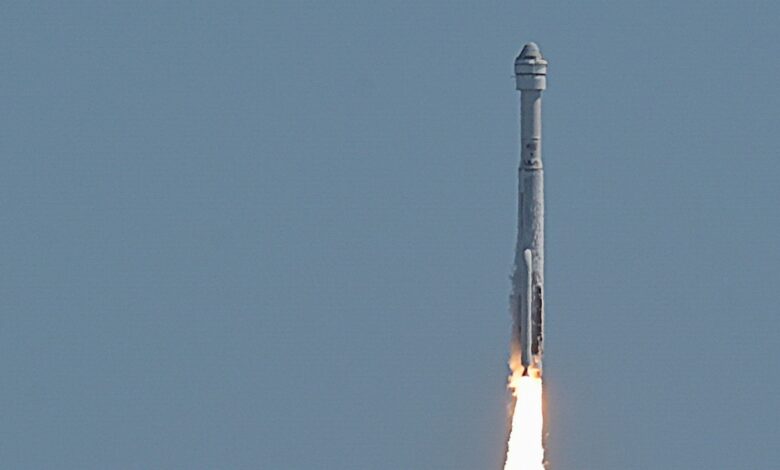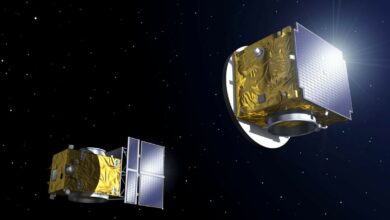Boeing Starliner astronauts trapped in ISS may return next year: NASA

NASA officials said Wednesday that the two astronauts who flew to the International Space Station in June aboard Boeing’s Starliner could return aboard SpaceX’s Crew Dragon in February 2025 if the Starliner is still not deemed safe enough to return to Earth.
The US space agency is discussing possible plans with SpaceX to leave two seats empty on the upcoming Crew Dragon launch for NASA astronauts Butch Wilmore and Sunita Williams, who became the first crew members to fly Boeing’s Starliner capsule.
The astronauts’ test mission to the space station was originally scheduled to last about eight days, but was delayed by problems with Starliner’s propulsion system, raising growing doubts about whether the spacecraft could safely return the astronauts to Earth as planned.
A Boeing spokesman said that if NASA decides to change Starliner’s mission, the company “will take appropriate actions to prepare Starliner for an unmanned return.”
Thrust failures during Starliner’s first approach to the ISS in June and multiple leaks of helium — used to pressurize those thrusters — prompted Boeing to launch a test campaign to determine the cause and propose solutions to NASA, which has the final say. Recent results have yielded new information, raising concerns about a safe return.
The latest test data has led to disagreement and debate within NASA over whether to accept the risk of Starliner returning to Earth or deploy Crew Dragon instead.
Deploying a SpaceX plane to bring back the astronauts Boeing planned to take on the Starliner would be a huge blow for an aerospace giant that has struggled for years to compete with SpaceX and its more experienced Crew Dragon.
Starliner has been docked with the ISS for 63 of its maximum 90 days and is berthed at the same port as Crew Dragon, which will deliver the incoming astronaut crew.
Early Tuesday morning, NASA delivered a routine delivery of food and supplies to the space station using a SpaceX rocket and a Northrop Grumman capsule, including extra clothing for Wilmore and Williams.
Starliner’s high-stakes mission is a final test required before NASA can certify the spacecraft for routine astronaut flights to and from the ISS. Crew Dragon received NASA approval for astronaut flights in 2020.
Starliner’s development has been slowed by management problems and numerous technical issues. It has cost Boeing $1.6 billion (about Rs. 13,431 crore) since 2016, including $125 million (about Rs. 1,049 crore) from Starliner’s current test mission, securities filings show.
Concerns at NASA
A meeting this week of NASA’s Commercial Crew Program, which oversees Starliner, ended with some officials disagreeing with a plan to accept Boeing’s test data and use Starliner to bring the astronauts home, officials said at a news conference.
“We didn’t conduct the surveys in a way that led to a conclusion,” said Steve Stich, head of the Commercial Crew Program.
“We heard from a lot of people expressing concerns, but the decision wasn’t clear,” added Ken Bowersox, NASA’s chief of space operations.
A Boeing executive was not present at Wednesday’s press conference.
While no decision has been made on whether to use Starliner or Crew Dragon, NASA has given Boeing more time to conduct more tests and gather more data to build a better case for trusting Starliner. NASA expects to make a decision sometime next week, officials said.
The agency on Tuesday postponed by more than a month SpaceX’s upcoming Crew Dragon mission, a routine flight called Crew-9 that is expected to send three NASA astronauts and a Russian cosmonaut to the ISS.
NASA’s ISS program director said the agency has not yet decided which astronauts, if any, they would send on the mission before Wilmore and Williams.
Boeing’s tests so far have shown that four of the Starliner jets failed in June because they overheated and automatically shut down. Other boosters that were reactivated during the tests were weaker than normal because of a restriction in their fuel.
Ground tests in late July at the White Sands Missile Range in New Mexico showed that overheating of the thrusters causes a Teflon seal to warp, clogging the fuel tubes for the thrusters and reducing their thrust.
“That has, I think, increased the discomfort and the lack of full understanding of the physics behind what’s happening,” said Stich, explaining why NASA now appears more willing to discuss a Crew Dragon event, after previously downplaying such a prospect to reporters.
© Thomson Reuters 2024
(This story has not been edited by NDTV staff and is auto-generated from a syndicated feed.)




